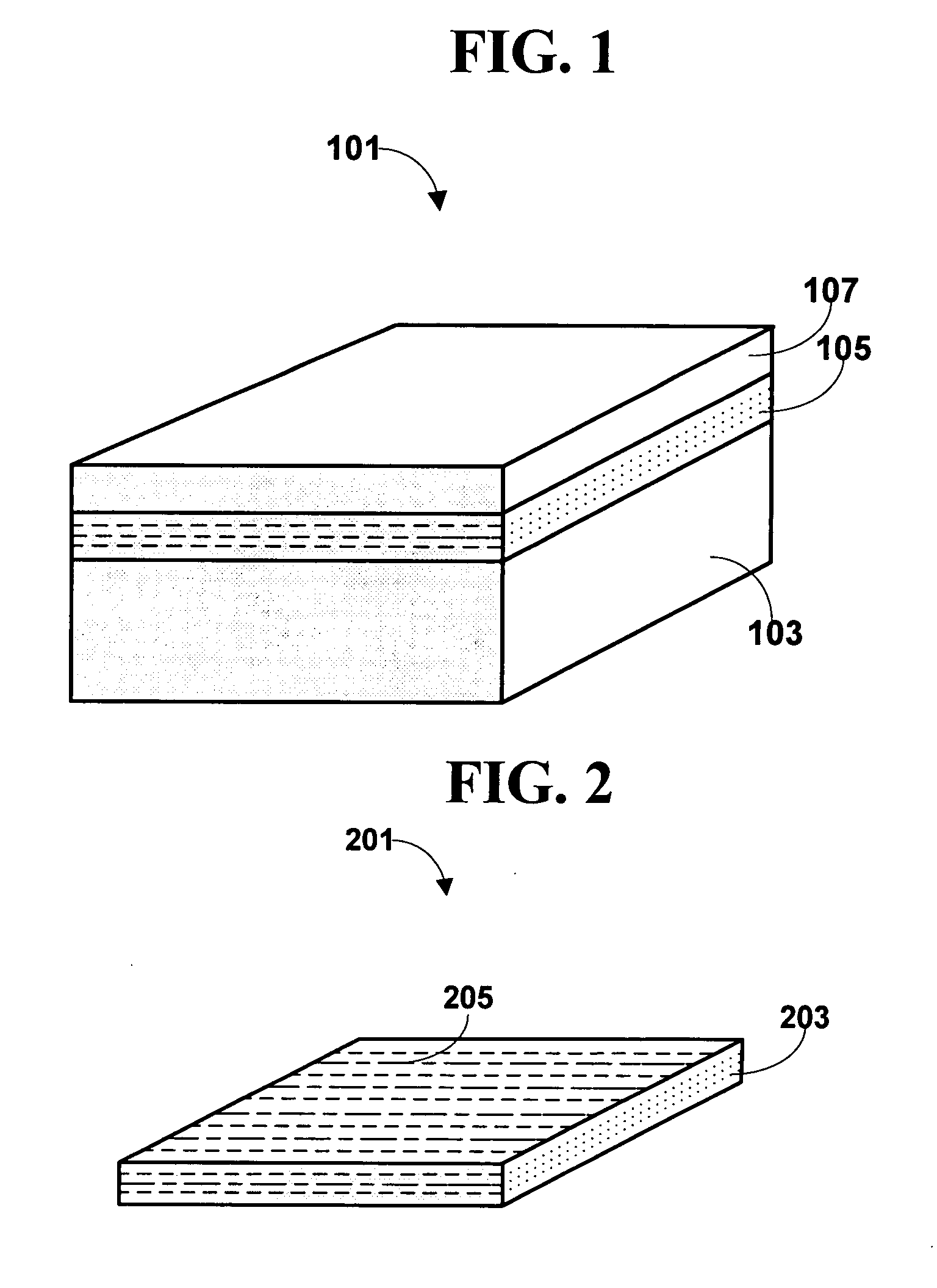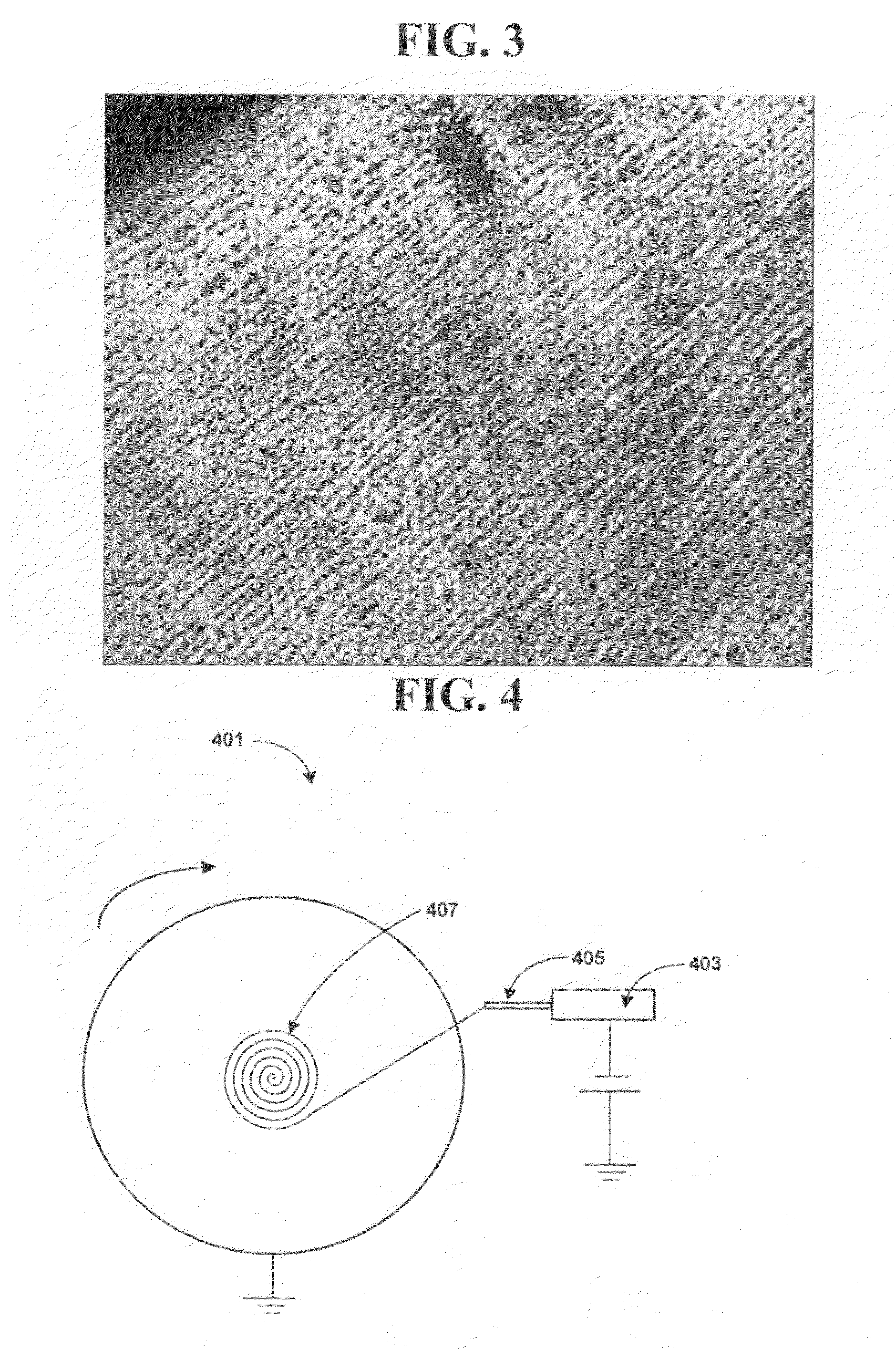Light-polarizing article and process for making same
- Summary
- Abstract
- Description
- Claims
- Application Information
AI Technical Summary
Benefits of technology
Problems solved by technology
Method used
Image
Examples
example
Preparation of a Polarizer
[0199]The selection of aspect ratio for a metal based polarizer depends on the wavelength of light to be polarized and the metal (or combination metals) that is doing the polarization. For a polarizer using a silver nanorod we would require an aspect ratio of 1:5 (width to length aspect ratio). Knowledge of the extent of DNA metallization for each process used is required to ensure the correct aspect ratio. For the metal adduct metallization technique a DNA duplex that is roughly 10 nm long is used assuming each metallization grew to about 2 nm. The base pair length calculation is 10 nm divided by 0.334 nm / base or 30 base pair long duplex. Such DNAs are easily made synthetically however procurement using purification techniques for raw extracts also are possible such as HPLC, centrifugation and electrophoresis. If other metallization techniques were chosen whose particle growth or size or templated size exceeded 2 nm then longer duplex DNAs is required. For...
PUM
| Property | Measurement | Unit |
|---|---|---|
| Width | aaaaa | aaaaa |
| Width | aaaaa | aaaaa |
| Nanoscale particle size | aaaaa | aaaaa |
Abstract
Description
Claims
Application Information
 Login to View More
Login to View More - R&D
- Intellectual Property
- Life Sciences
- Materials
- Tech Scout
- Unparalleled Data Quality
- Higher Quality Content
- 60% Fewer Hallucinations
Browse by: Latest US Patents, China's latest patents, Technical Efficacy Thesaurus, Application Domain, Technology Topic, Popular Technical Reports.
© 2025 PatSnap. All rights reserved.Legal|Privacy policy|Modern Slavery Act Transparency Statement|Sitemap|About US| Contact US: help@patsnap.com



